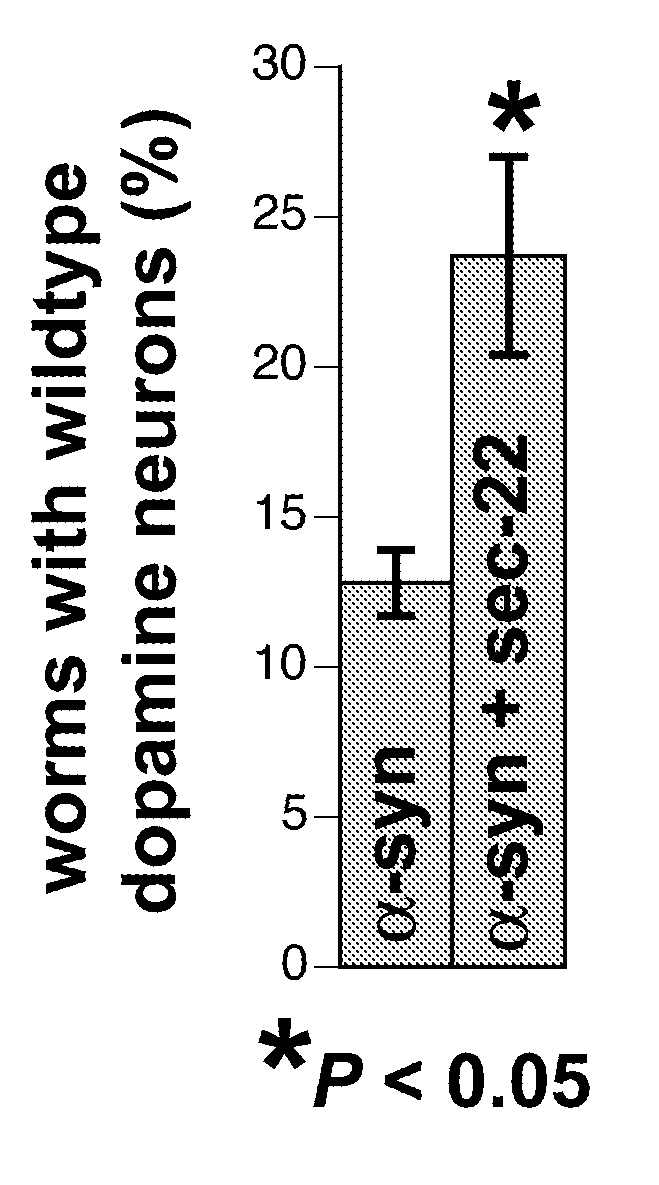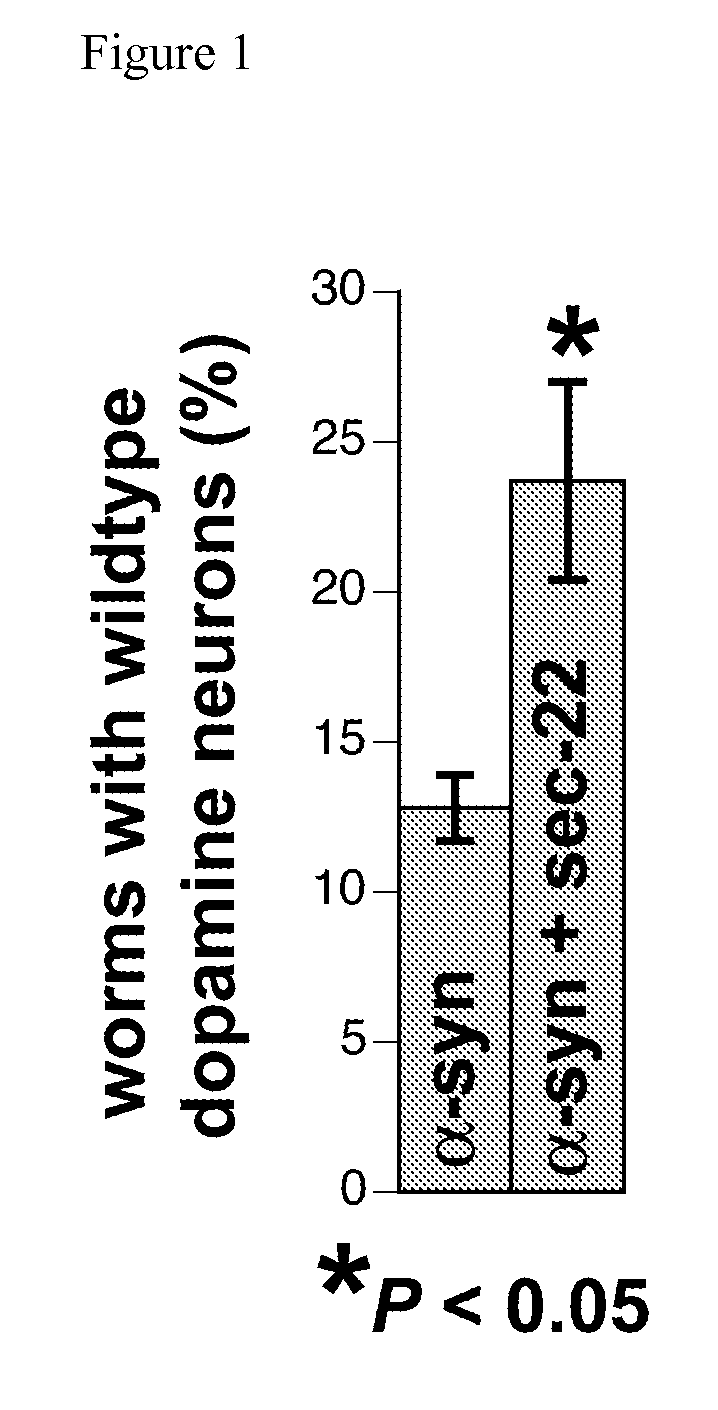Regulators of protein misfolding and neuroprotection and methods of use
a technology of protein misfolding and protein encoding, applied in the field of polynucleotide molecules encoding neuroprotective proteins, can solve the problems of abnormal accumulation and degradation of misfolded proteins, neuronal inclusions and plaques, and progressively more severe conditions, so as to reduce or prevent protein misfolding, increase protein misfolding and aggregation, effect of increasing protein misfolding
- Summary
- Abstract
- Description
- Claims
- Application Information
AI Technical Summary
Benefits of technology
Problems solved by technology
Method used
Image
Examples
example 1
Screening for Genes Regulating Protein Aggregation in Parkinson's Disease Using RNAi
[0146]A transgenic C. elegans line overexpressing alpha-synuclein::GFP was developed and results in the formation of visual aggregates of alpha-synuclein detectable by fluorescent microscopy. Gene expression is under the control of the unc-54 promoter to direct expression to the body wall. Another transgenic worm line containing alpha-synuclein::GFP+TOR-2 was used for RNAi screening of candidate genes related to protein aggregation. The presence of TOR-2 in the alpha-synuclein::GFP+TOR-2 worm prevents the aggregation of alpha-synuclein::GFP fusion protein in body-wall muscle cells resulting in a diffuse fluorescence. Similar suppression of protein aggregation by TOR-2 has been previously reported for polyglutamine-dependent protein aggregation (Caldwell et al. Hum Mol Genet. 2003 Feb. 1; 12(3):307-19). This transgenic organism allows for a rapid screening method using RNAi feeding in body-wall muscle...
example 2
Neuroprotection of Dopamine Neurons by Candidate Gene Expression after Alpha-Synuclein Overexpression
[0152]A new isogenic line of nematodes was designed specifically for screening candidate Parkinson's disease genes for evidence of neuroprotection. This new isogenic line contains a chromosomally integrated transgene overexpressing human alpha-synuclein in dopamine neurons alone with GFP to evaluate neurodegeneration in vivo during development and aging. This line exhibits approximately 30-40% degeneration at the 4-day adult stage of C. elegans development and represents an ideal tool for investigation of environmental / genetic factors in which alpha-synuclein predisposition may impact dopamine neurodegeneration. Systematic evaluation of the positive RNAi screen candidates were performed by crossing animals overexpressing corresponding cDNAs in dopamine neurons of this alpha-synuclein strain and then finding evidence of neuroprotection. This strain may also be used in medium through-p...
example 3
Method of Using a Microarray to Detect Protein Alterations and Diagnose Predisposition to or Presence of Parkinson's Disease in Humans
Production of a Parkinson's Disease Microarray
[0164]A Parkinson's Disease microarray is made using standard commercially available microarray technology such as spotted microarrays or the high-density, oligonucleotide-based platform used by Affymetrix, Inc. A moderate to large number of genes and / or transcripts is selected for analysis, i.e., expression (or response) profiling. Nucleic acid sequences that can be monitored in the methods of the present invention include, but are not limited to, those listed with the National Center for Biotechnology Information (on the world wide web at ncbi.nlm.nih.gov) in the GenBank.RTM. databases, and sequences provided by other public or commercially-available databases (for example, the NCBI EST sequence database, the EMBL Nucleotide Sequence Database; Incyte's (Palo Alto, Calif.) LifeSeq.™ database, and Celera's...
PUM
| Property | Measurement | Unit |
|---|---|---|
| aggregation | aaaaa | aaaaa |
| protein aggregation | aaaaa | aaaaa |
| neurodegenerative disorder | aaaaa | aaaaa |
Abstract
Description
Claims
Application Information
 Login to View More
Login to View More - R&D
- Intellectual Property
- Life Sciences
- Materials
- Tech Scout
- Unparalleled Data Quality
- Higher Quality Content
- 60% Fewer Hallucinations
Browse by: Latest US Patents, China's latest patents, Technical Efficacy Thesaurus, Application Domain, Technology Topic, Popular Technical Reports.
© 2025 PatSnap. All rights reserved.Legal|Privacy policy|Modern Slavery Act Transparency Statement|Sitemap|About US| Contact US: help@patsnap.com


